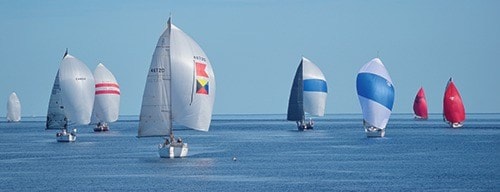A briefing on tsunami debris and ocean garbage helped crews and skippers in the Black Press Van Isle 360 yacht race get up to speed on potential navigation hazards and learn about the impact our culture is having on the marine environment.
Prior to the race start on June 8, Karla Robison, manager of environmental and emergency services for the District of Ucluelet, gave competitors a presentation on how communities on Vancouver Island’s West Coast are dealing with ocean debris washing ashore.
The information is especially valuable now as the vessels navigate the challenging waters off the rugged coast. The boats sailed from Ucluelet harbour to Victoria yesterday, and will leave the capital Friday (June 21), finishing in Nanaimo harbour sometime Saturday.
The earthquake and tsunami that struck Japan in March 2011 discharged millions of tonnes of debris into the Pacific Ocean, a percentage of which is currently arriving on North America’s West Coast.
Robison said scientific studies and tracking of the roughly five million tonnes of debris estimated to have been swept into the ocean, indicates about 1.25 million tonnes could wash up onto North American beaches. The rest will either drift back to Japan, sink, or remain circulating in the Great Pacific Garbage Patch.
Robison is heavily involved with programs to clean up the debris as it arrives.
That debris consists of everything from fishing floats to buildings, fishing skiffs to derelict ships, silos, container tanks, lumber and hazardous materials, such as containers of pesticides and volatile chemicals. Shipping containers and even a Harley Davidson motorcycle have washed ashore.
“Some of the lighter stuff was going to arrive a bit earlier and heavier stuff is still going to be coming and it’s going to be continuing to arrive,” Robison said. “There are small eddies in the ocean that keep dispersing this debris further and further so it’s really hard to track.”
The debris moves at a rate of about 240 kilometres every 30 days, but few items are likely to make their way into the Strait of Georgia.
A lot of what is coming ashore now is lumber, styrofoam, fishing floats, drift nets and plastic bottles. Local volunteer groups are keeping beaches around communities clean.
“A lot of the debris is where people can’t access, so our beaches around here are fairly clean of it because of enormous volunteer support to come out and clean them up, but you go in a boat up or down the coast, there’s debris,” Robison said.
Invasive marine species, such as mussels and barnacles that could take hold here and compete with or overrun local species, are piggybacking on sections of docks, boat hulls and floats.
Debris comes from places other than Japan. The Great Pacific Garbage Patch contains flotsam from many nations.
Robison handed out information and phone numbers to call, such as the ministry of environment for hazardous materials or the Canadian Coast Guard or Transport Canada if crews encounter offshore derelict vessels and other navigation hazards.
Yacht crews will likely be interested in the information she’s offering, not just from a safety standpoint, but from an environmental one as well.
“It not just about tsunami debris,” she said. “There’s a marine debris issue out there and it’s pretty significant. Eighty per cent of marine debris comes from land.”
For more information on tsunami debris, please visit the B.C. Ministry of Environment website at http://env.gov.bc.ca/epd/tsunami-debris/index.htm.
Readers can also view Robison’s presentation material by visiting the District of Ucluelet website at www.ucluelet.ca.
